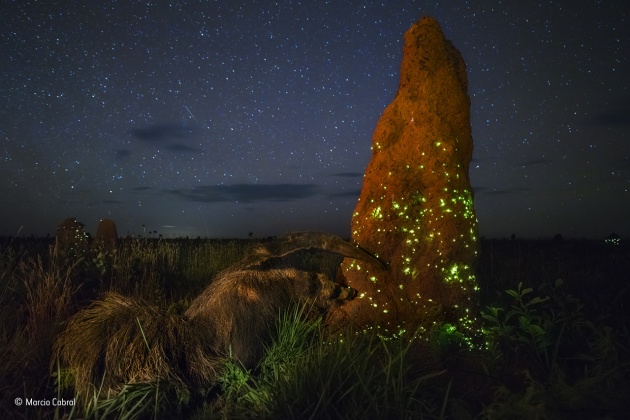Wildlife photographer of the year winner stripped of title for using 'stuffed' animal
A winner of the prestigious Wildlife Photographer of the Year title has been stripped of his award after it was alleged he used a taxidermied anteater in his winning image.

Marcio Cabral won the Animals in their Environment category for his photo 'the night raider', depicting an anteater raiding a termite mound in Brazil.
However soon after his win, an inquiry was launched after a whistleblower tipped off judges at London’s Natural History Museum that Cabral had used the same taxidermied animal as the one displayed at the visitor centre of Brazil’s Emas National Park, where the winning shot was taken.
Five experts investigated the claims together with a taxidermist, with all agreeing the two anteaters had identical tufts of fur and patterns on the neck and head.
Judge Roz Kidman Cox said: “I find it disheartening and surprising that a photographer would go to such lengths to deceive the competition and its worldwide following. The competition places great store on honesty and integrity. Such a breach of the rules is disrespectful to the wildlife photography community.
“This disqualification should remind entrants any transgression will be found out.”
Cabral maintains his innocence. As part of the checking process for winners, photographers are required to submit RAW files of their images, something he did do.
Cabral says he was only able to supply one RAW file showing the anteater and mound together as a result of shooting with a long exposure (30 seconds) at 5000 ISO. The animal was easily spooked and moved away quickly. As such, he has been not been accused of traditional image manipulation.
“The recent Wildlife Photographer of the Year disqualification was not due to the image being ‘photoshopped in’,” an NHM spokesperson told PetaPixel. “Digital manipulation had nothing to do with the disqualification and the RAW file of the entry was examined for excessive manipulation and cleared during judging in April 2017 […] The rigorous examination of RAW files for excessive editing is a key element of the WPY judging process.”
What this means is Cabral has been accused of physically moving the taxidermied anteater from the visitor's centre of the National Park to the termite mound.
“[T]he specimen at the park entrance is on open display and is not fixed to the ground,” the museum told PetaPixel.

However as the images of both the taxidermied anteater and Cabral's image spread on the internet, doubts were raised about the similarity between the two animals.
Although they are both in the same position, the taxidermied animal appears to have a large white patch on its front leg that the final image doesn't share.

For now, Cabral has been stripped of his award. The museum also says they won't re-award the image category to another entrant as all voting is 'blind' (judges do not know which photographer took each image).

